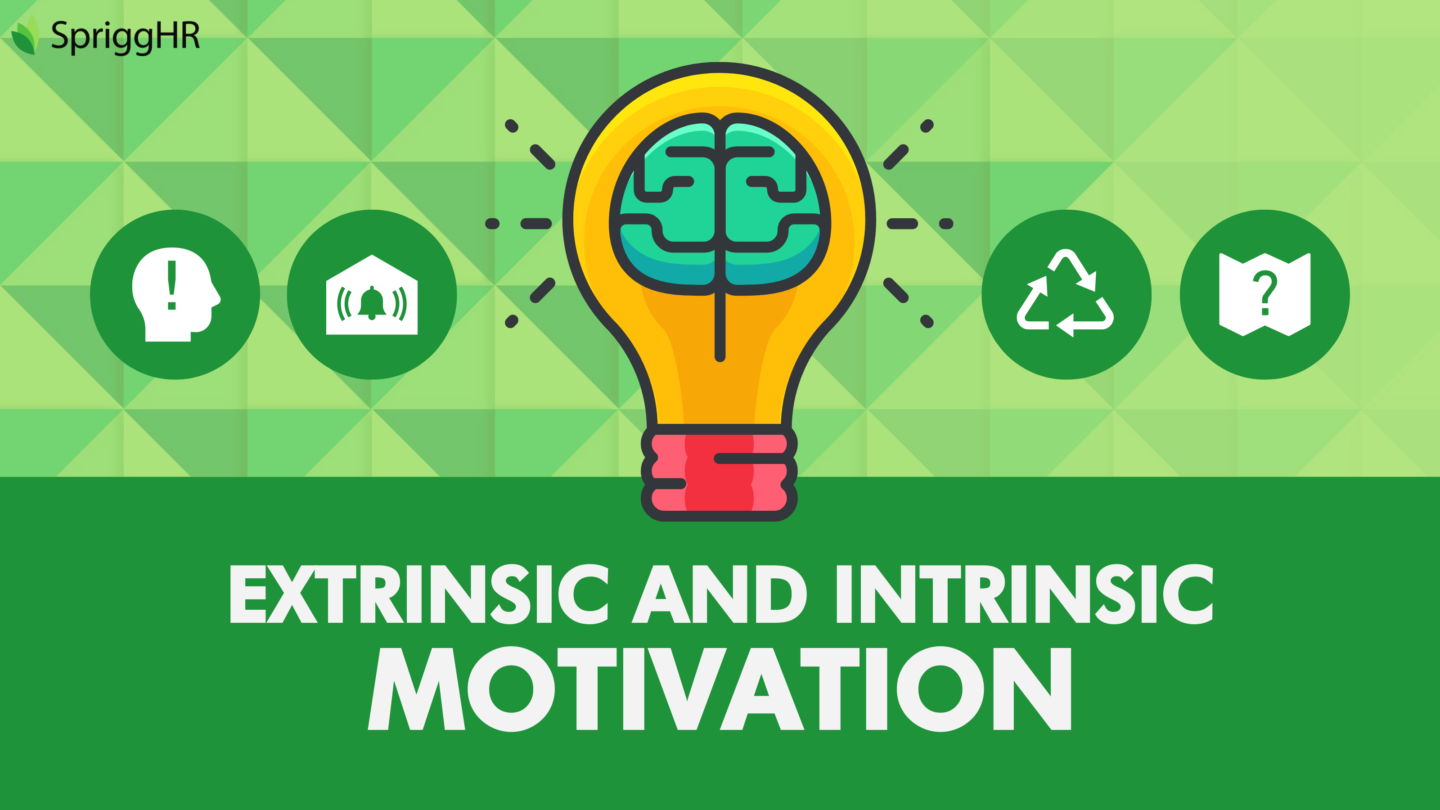
Extrinsic & Intrinsic Motivation Examples – What’s the Difference?
What drives us to do the things we do? What is it that pushes us to accomplish things? A simple answer would be personal gain, but the question is much more complex than that. There are many ways to look at the concept of motivation, one of which is to examine motivation examples.
A key ability of successful people is that they know how to motivate themselves effectively. The skill of being able to start and finish tasks rigorously is what solidifies their chances at being successful overall. But what kind of motivation is most important? Is it motivation that arises from outside the individual (extrinsic), or motivation that arises from inside the individual (intrinsic)?
There are benefits to both types of motivation, each with their own set of respective effects on behaviours and how people choose to pursue goals. In order to understand how these types of motivation influence human action and a drive for success, we must first understand what each one is.
In a hurry? Take the infographic to go!

Intrinsic vs Extrinsic Motivation
Send download link to:
What is Extrinsic Motivation?
Simply put, extrinsic motivation refers to the behavior of individuals to perform tasks and learn new skills because of external rewards or avoidance of punishment. In this case, you engage in behavior not because you enjoy it or because you find it appealing or satisfying, but in order to obtain something of value in return or avoid something unpleasant. Let’s take a look at some extrinsic motivation examples:
Extrinsic Motivation Examples
- Going to work because you want to earn money
- Studying because you want to get a good grade
- Helping others because you hope for praise
- Volunteering because it looks good on a resume
- Going to the same store because you benefit from loyalty programs
- Cleaning your apartment because you do not want your partner to get mad
- Going to new places because you want to post it on social media
- Paying taxes because you want to avoid a fine
- Pursuing a certain degree because you want to make your parents proud
- Going on a business trip because you were ordered by your boss to do so

What is Intrinsic Motivation?
Intrinsic motivation refers to the act of doing something that does not have any obvious external rewards. You do it because it’s enjoyable and interesting to you, not because of any outside incentive or pressures, like rewards or deadlines. In short, intrinsic motivation is performing an activity for its own sake rather than the desire for some external reward or out of some external pressure. Essentially, the behavior itself is its own reward.
Intrinsic motivation is more about personal growth, a sense of duty, and the recognition of purpose, while extrinsic motivation is more about financial incentives, status, and public recognition. Let’s look at some intrinsic motivation examples:
Intrinsic Motivation Examples
- Playing sports because you enjoy how they make you feel
- Staying longer at work because you believe in your work
- Using positive affirmations because you want to change your mindset positively
- Investing money because you want to become financially independent
- Traveling because you want to explore different cultures
- Working in a team because you enjoy collaboration
- Learning about personal development because you want to improve yourself
- Going to the playground with your children because it makes you happy
- Studying because you are curious about the topics
- Trying to be a good leader because you want to inspire

Extrinsic vs. Intrinsic Motivation
Intrinsic motivation comes from within, while extrinsic motivation arises from external factors. When you are intrinsically motivated, you engage in an activity because you enjoy it and get personal satisfaction from doing it. When you are extrinsically motivated, you do something in order to gain an external reward.
Consider the way each type considers both motivation and goals:
Intrinsic Motivation:
- You are motivated to do the activity because it is internally rewarding. You choose to do it because it’s fun, enjoyable, and satisfying.
- Your goal comes from within, and the outcomes of your goal satisfy your basic psychological needs for autonomy, competence and relatedness.
Extrinsic Motivation:
- You are motivated to do the activity in order to gain an external reward in return.
- Your goal is focused on an outcome, and does not satisfy your basic psychological needs. Rather, it involves external gains, such as money, fame, power, and avoiding consequences.
You have likely experienced both types of motivation throughout your entire life, and often, the goal of your motivations can remain the same regardless of whether the outcome is something internal or external. These extrinsic and intrinsic motivation examples illustrate this idea:
| Intrinsic | Extrinsic |
| Participating in a sport because it’s fun and you enjoy it. | Participating in a sport in order to win a reward or get physically fit. |
| Learning a new language because you like experiencing new things. | Learning a new language because your job requires it. |
| Spending time with someone because you enjoy their company. | Spending time with someone because they can further your social standing. |
| Cleaning because you enjoy a tidy space. | Cleaning to avoid making your partner angry. |
| Playing cards because you enjoy the challenge. | Playing cards to win money. |
| Exercising because you enjoy physically challenging your body. | Exercising because you want to lose weight or fit into an outfit. |
| Volunteering because it makes you feel content and fulfilled. | Volunteering in order to meet a school or work requirement. |
| Going for a run because you find it relaxing or are trying to beat a personal record. | Going for a run to increase your chances at winning a competition. |
| Painting because it makes you feel calm and happy. | Painting so you can sell your art to make money. |
| Taking on more responsibility at work because you enjoy being challenged and feeling accomplished. | Taking on more responsibility at work in order to receive a raise or promotion. |
Which is Best: Extrinsic or Intrinsic Motivation?
Each person is different, and what motivates us and our perspectives of rewards are also different. Some are inherently more intrinsically motivated by tasks, while others see the same activities extrinsically.
While both can be effective, most agree with the idea that extrinsic rewards should be used less in order to minimize the overjustification effects. This phenomenon refers to the findings that offering excessive external rewards for what is already an internally rewarding behavior can lead to a reduction in intrinsic motivation.
This is not to say that extrinsic motivation always presents negative outcomes. In fact, it can be extremely beneficial in some situations, those where someone needs to complete a task that they find unpleasant. Excessive rewards may be problematic, but when used appropriately, extrinsic motivating factors can be a useful tool.
There are several factors that can work to promote intrinsic motivation. By focusing efforts on these factors when introducing intrinsic motivations, you will see how beneficial intrinsic motivation can be. These factors include but are not limited to:
- Curiosity: Fostered curiosity pushed people to explore and learn for the sole pleasure of learning and mastering.
- Challenge: Being challenged helps people to work at optimal levels continuously, while staying consistent in working towards meaningful goals.
- Recognition: People have an innate desire to be appreciated, so when efforts are recognized and appreciated by others, satisfaction becomes a reward in and of itself.
- Cooperation: Cooperating with others satisfies the need to belong. It also presents the reward of satisfaction, because cooperation involves helping others and working together towards a shared goal.
Final Thoughts
While intrinsic motivation is often seen as ideal due to its sustainability and the inherent nature of its rewards, both extrinsic and intrinsic motivation are influential in driving behavior. In order to understand how these can be best utilized, it is important to understand their key differences and the optimal times to employ each method.
Take the infographic to go!
Intrinsic vs Extrinsic Motivation
Send download link to:




